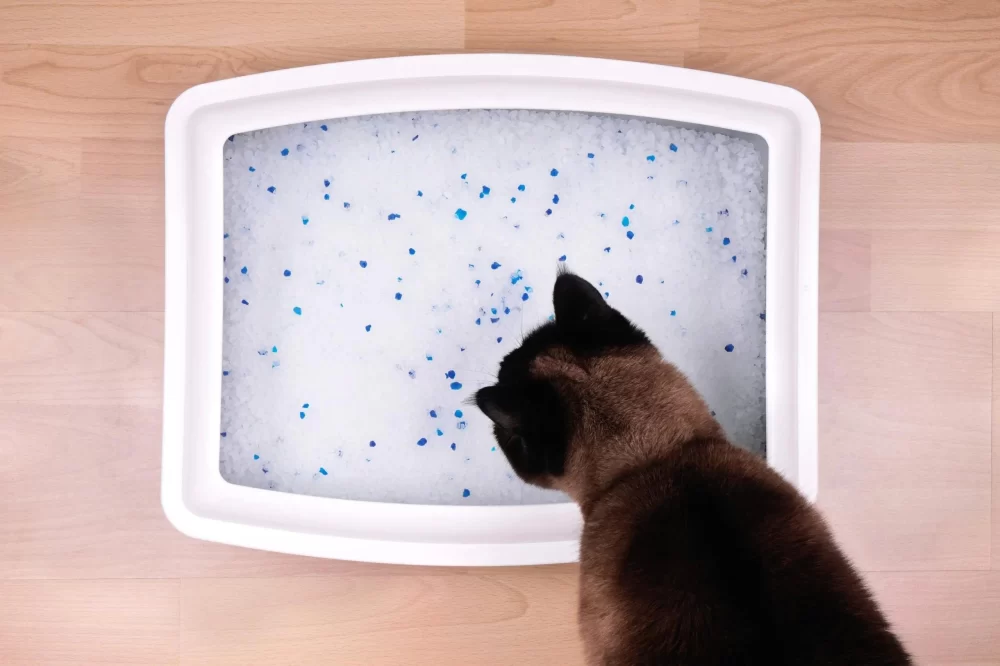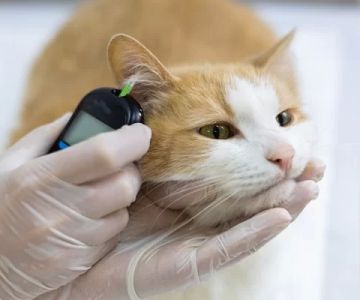How to Deal with a Cat Who Refuses to Use the Litter Box
When I first adopted my cat, Whiskers, everything was going great—until I encountered the one problem that every cat owner dreads: she started refusing to use the litter box. At first, I thought it might just be a fluke, but soon enough, it became clear that Whiskers had developed a habit of avoiding the box altogether. The result? Accidents all over the house, and my frustration levels skyrocketing. I had no idea what to do. Was it a behavioral issue? Health-related? Was she just being stubborn? I quickly learned that dealing with a cat who refuses to use the litter box can be a complex issue, but with patience and persistence, it is absolutely solvable.
Understanding Why Cats Refuse to Use the Litter Box
The first thing I learned during this process was that there are several reasons a cat might suddenly stop using the litter box. Cats are known for being creatures of habit, so a sudden change in behavior usually indicates an underlying issue. It’s important to understand that this problem can be more than just a behavioral issue—it could be a sign of stress, health problems, or even something as simple as a dislike of the litter itself.
For Whiskers, I soon discovered that the issue wasn’t behavioral but rather a result of stress. A few weeks before she started avoiding the litter box, we had moved to a new apartment, and she was adjusting to the changes in her environment. Cats are sensitive to their surroundings, and even the slightest change can trigger anxiety. In Whiskers' case, it was the new environment, the change in routines, and perhaps even the unfamiliar sounds of the new place that led her to avoid the litter box.
Common Causes for Litter Box Problems
As I dug deeper into the issue, I realized that there are a variety of reasons why a cat may refuse to use the litter box. Here are some of the most common causes:
- Health Issues: One of the first things I had to rule out was a medical problem. Cats often stop using the litter box due to urinary tract infections (UTIs), bladder stones, or constipation. If a cat is in pain when urinating or defecating, they may associate the litter box with discomfort and begin avoiding it altogether. I took Whiskers to the vet for a checkup, and fortunately, there were no underlying health issues. But if your cat refuses to use the litter box, it’s always a good idea to consult a vet to rule out health problems.
- Stress and Anxiety: Cats are sensitive creatures, and changes in their environment or routine can trigger stress or anxiety. Whiskers’ refusal to use the litter box was, in part, a result of her being stressed about the move. Cats may also avoid the litter box if they’re dealing with changes such as new pets, new people in the household, or even a change in their usual feeding schedule. Understanding and addressing your cat’s stress is crucial to solving the problem.
- Dirty or Unappealing Litter Box: It may sound simple, but sometimes cats refuse to use the litter box because it’s not clean enough for their liking. I quickly realized that I hadn’t been cleaning the litter box frequently enough. Whiskers started avoiding it when I allowed it to get too dirty. Cats are naturally clean animals, and they may avoid using a litter box that doesn’t meet their standards of cleanliness.
- Litter Type or Location: The type of litter you use and the location of the litter box can also play a big role. Whiskers didn’t like the new, clumping litter I had switched to after we moved. Cats can be very particular about the texture and scent of their litter. Similarly, if the litter box is placed in a location that feels unsafe or inaccessible to your cat, they may avoid it. Whiskers, for instance, started avoiding the litter box that I had placed in a quieter, more hidden spot.
Steps to Solve the Litter Box Problem
After ruling out medical issues with Whiskers, I started focusing on other aspects of the situation to resolve the problem. Here’s what worked for me:
- Ensure a Clean Litter Box: The first step I took was to make sure that the litter box was always clean. I started scooping it daily and changing the litter completely every week. I also made sure to wash the box itself regularly. This simple act of keeping the litter box clean made a big difference—Whiskers began using it again after I made sure it was pristine.
- Provide Multiple Litter Boxes: I learned that having multiple litter boxes is important, especially in multi-cat households or larger homes. I added an extra box in another part of the apartment to give Whiskers options. This helped her feel more comfortable using the litter box again, as she had a choice of where to go.
- Change the Litter Type: After experimenting with different types of litter, I found that Whiskers preferred a fine-grain, unscented litter. She seemed to dislike the clumping variety I had initially chosen. I switched to a natural, unscented litter, and to my relief, she started using the box again. The texture and scent of the litter can make all the difference to a picky cat.
- Address Stress and Anxiety: Since Whiskers’ refusal to use the litter box was partly due to stress from the move, I made an effort to create a more secure and comforting environment for her. I kept her routine consistent and provided cozy hiding spots where she could retreat when she needed a break. I also used pheromone diffusers designed to reduce stress in cats, which seemed to help calm her down.
- Use Positive Reinforcement: Every time Whiskers used the litter box correctly, I rewarded her with praise and treats. Positive reinforcement helped reinforce the behavior I wanted to see. Over time, she started associating the litter box with positive outcomes, and the accidents became less frequent.
When to Seek Professional Help
Despite my best efforts, if your cat continues to refuse the litter box after trying the above steps, it may be time to consult a professional. A veterinarian or an animal behaviorist can help assess the situation more thoroughly and offer additional solutions. Sometimes, persistent litter box problems can be linked to deeper behavioral or health issues that require professional attention.
My Experience and the Results
With patience and persistence, Whiskers eventually resumed using the litter box regularly. It took time, but by addressing her stress, keeping the box clean, and finding the right litter, we overcame the issue. Now, Whiskers is back to using the litter box without issue, and I feel much more confident in managing her behavior. While it took some trial and error, I’m glad I was able to help her feel comfortable again.
If you’re struggling with a cat who refuses to use the litter box, don’t lose hope. By understanding the underlying causes and making adjustments to your cat’s environment, routine, and litter box setup, you can solve the problem. With time and effort, your cat will be back to using the litter box without hesitation.












